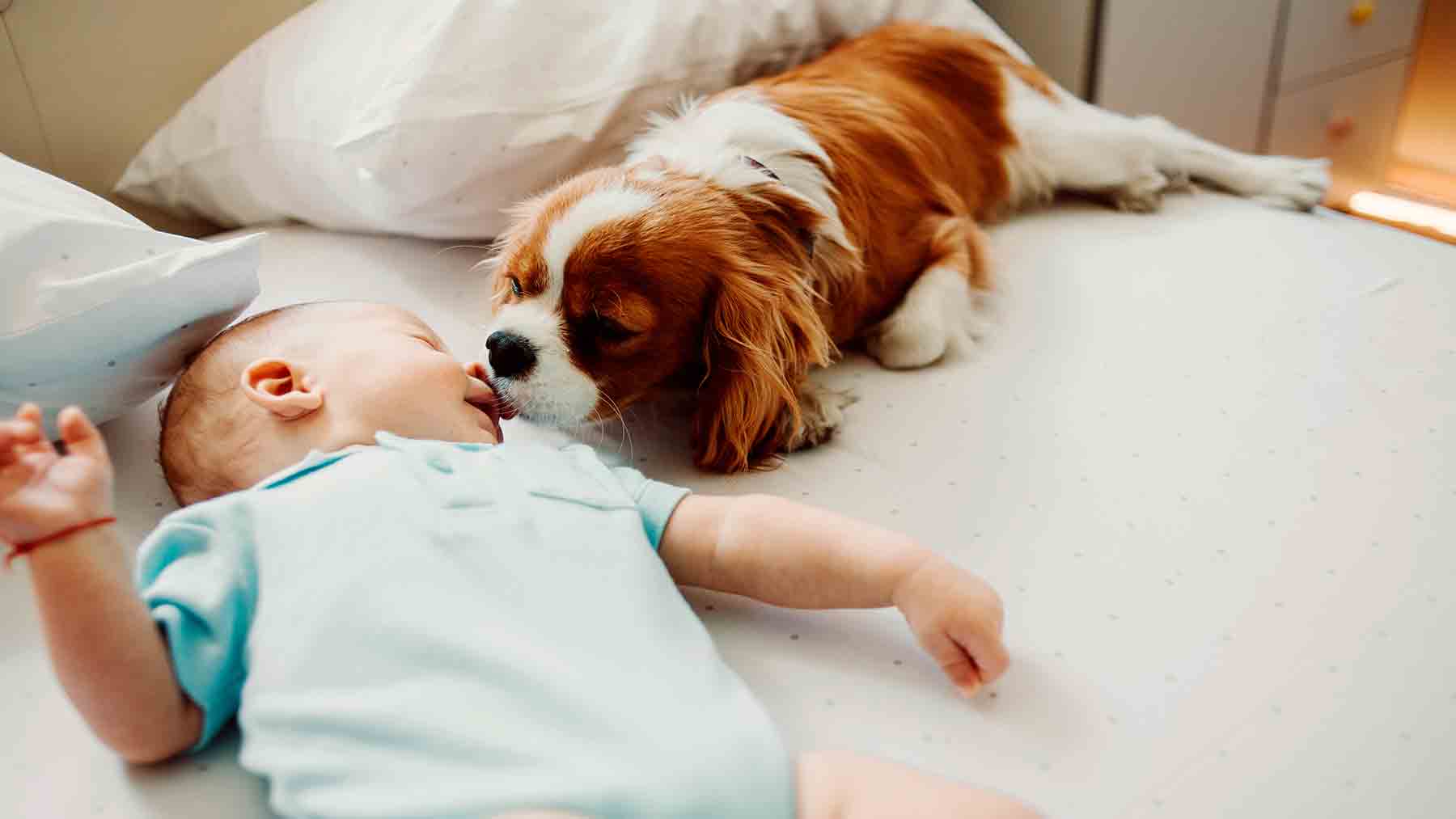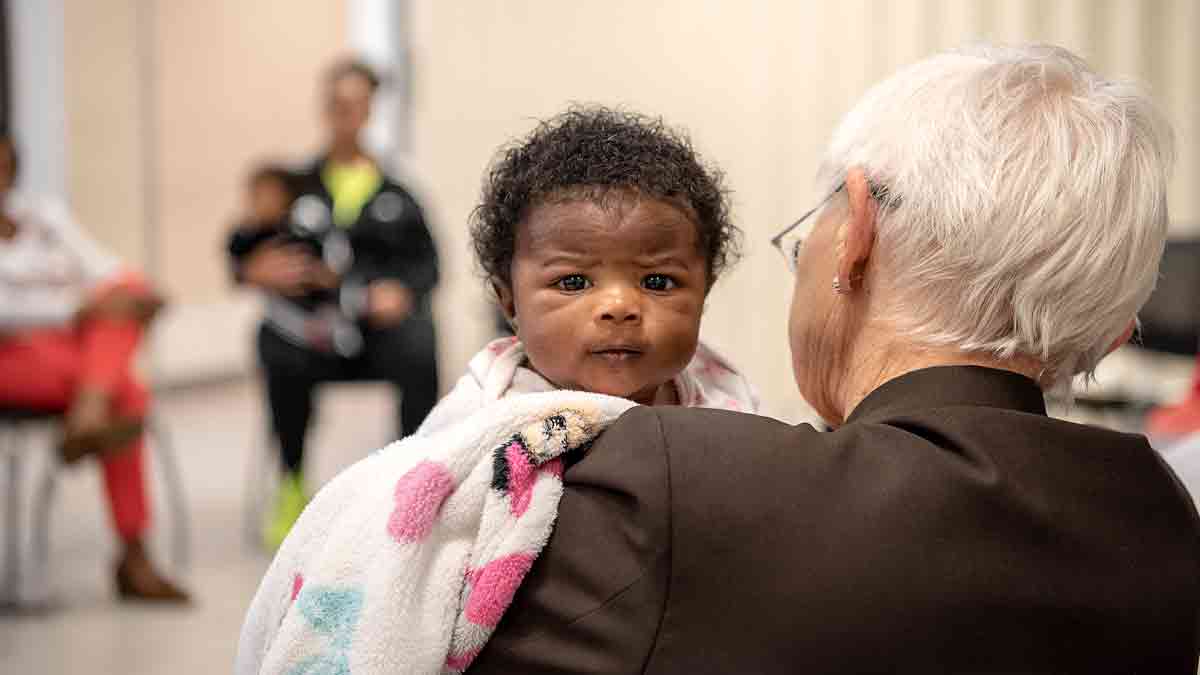How to introduce your baby to your pet

For parents of fur babies, the joyous occasion of bringing home a new baby can also be mixed with some worry and fear about how your pet will react to the new addition.
There are many ways to prepare your dog for this time of transition, both during pregnancy and when you bring your new bundle of joy home.
How can I start to prepare before baby?
The time before baby arrives is your best chance to introduce your pet to the physical changes in their home environment associated with the baby.
Even if your nursery isn’t fully finished, you should start getting your dog accustomed to the rule of not being in the baby’s room without supervision. This is especially important if your pet was allowed to freely enter and exit the room before. If you’ll be using a gate, install it now or start keeping the door closed.
Consider using an exercise pen (X-pens) to confine your dog away from the baby but still be in the same room with you. These “safe zones” for dogs should be filled with appealing toys — possibly food-based — when your dog is confined there. Make sure to try one out before baby arrives to make sure your dog is comfortable in their pen.
Familiarize your pet with any baby furniture that you will be using, including cribs, bassinets, swings, etc. If they can become comfortable with the sights and sounds of these items early, it won’t have to be a part of the changes when baby arrives.
Teach your dog to associate a pleasant experience with certain baby scents, such as baby lotion or powder, by rubbing some on your hands just prior to treat-training and relaxed petting.
There’ll be lots of interesting new sounds that fill your home once the baby arrives. It may be helpful to get a CD of baby sounds, such as crying and gurgling, and play it frequently so that your pet isn’t hearing these sounds for the first time when you bring your baby home.
Finally, start establishing a time when your pet can expect you to give them a little special attention each day. Although it’s hard to predict what the sleeping/waking/fussy periods of the day will be, try to choose a time when there’ll usually be more than one adult at home. Begin spending 15-30 minutes with your pet. Even if you can’t always give your pet attention at this time, it will be helpful to accustom them to the idea that a certain part of the day will be spent interacting with you.
How do I introduce my dog to the baby?
If possible, while you’re still at the hospital, send an item of the baby’s clothing home with a family member for your pet to smell and get to know the baby’s scent. This may not be feasible for everyone, but it's a good first step before actually entering the home with your newborn.
When it’s time to bring the baby home, it’s important for at least one other adult to be there to help. This moment can be overwhelming for everyone, especially for anxious and overly excited pets. Consider coming in to greet the pet yourself, while someone else is carrying the baby.
Once your pet has had a chance to greet you, it’s helpful to have another adult attend to your dog while you and the baby get settled. If your pet is accustomed to staying in a “safe room,” behind a gate or in an X-pen, this would be the perfect place for them now.
An adult should always be present when your dog has access to touching the baby. It’s important to remember that if your pet has a history of growling, snapping or snarling at people, there should always be two adults present when they’re in the same area—one adult supervising the pet and one supervising the baby’s movements. Even better yet, a consultation with your veterinarian for a more comprehensive safety assessment and plan is recommended in these cases. If you cannot adequately supervise or if you’re unsure, your pet should always be in its “safe zone” when the baby is up and active. Even the most tolerant pets should never be left alone with babies and young children. As tempting as it is to leave the room to answer the phone, or use the restroom, or turn off the oven, etc., the baby should go always go with you or the pet should be in its “safe zone.”
Bringing baby home is already an incredibly overwhelming experience, so some pet parents decide to send their dog to stay with a trusted friend for a few days, then start the introduction process.
Preparing now can facilitate the start of a great friendship between both of the babies in your home. This is just the first phase in keeping all of your family members happy, healthy and safe. Start thinking now about how you’ll prepare when baby is more mobile and interacting in different ways with your pet. If you’re still having trouble with the transition after following the recommended guidelines, consult with your veterinarian to make a plan of action.
Meghan Herron is a veterinarian at The Ohio State University College of Veterinary Medicine who specializes in behavioral medicine.




